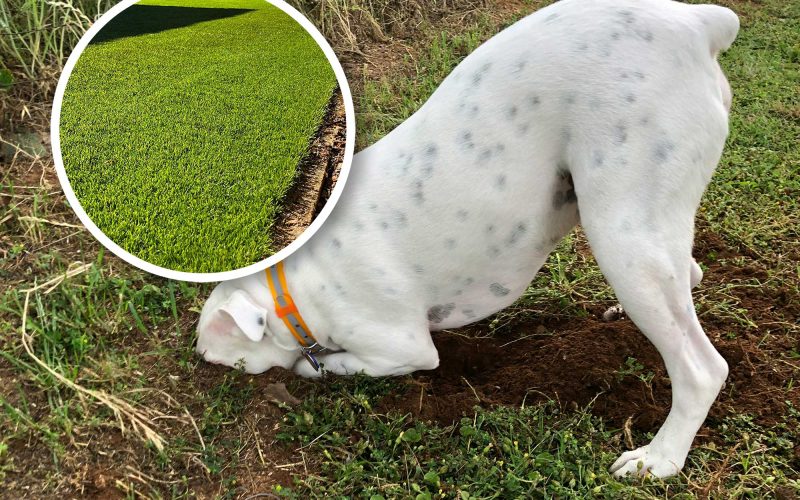How to stop pets from digging or damaging artificial grass
We’ve seen it so many times. A homeowner invests in beautiful artificial grass, only to have their dog turn it into a personal excavation site within days. Little holes here, tufts pulled there — it can be frustrating (and expensive) when your furry friend decides your lawn is their new digging playground.
But here’s the good news: you can stop pets from digging or damaging pet friendly artificial grass. It’s something we deal with regularly, and with the right approach, you’ll protect your turf and keep your dog happy.

Why do dogs dig artificial grass?
First, it helps to understand why your dog is digging in the first place. It’s rarely about the grass itself. Usually, it’s one of these common reasons:
- Boredom or excess energy
- Instinct to bury toys or bones
- Trying to cool down in hot weather
- Separation anxiety or stress
- Habit carried over from real grass lawns
One client we helped had a border collie that would dig frantically whenever left outside alone. It wasn’t about the grass — it was her way of dealing with being bored while her owners were at work. Once we tackled why she was digging, the damage stopped.
Practical ways to protect your artificial grass from digging damage
1. Choose heavy-duty, pet-friendly turf
Not all artificial grass is built the same. For homes with dogs, we always recommend products with reinforced backing and durable yarns. These hold up much better against scratching, pawing, and attempted digging. A weak turf will tear easily, making the problem worse.
2. Secure the edges properly
One of the first things we do during installation is make sure every edge is well-secured. If a dog can get its nose or paw under an edge, it’s game on for a digging session. We use robust fixing methods to ensure there are no loose edges tempting your pet.
3. Address boredom and exercise needs
A tired dog is a well-behaved dog. Providing enough physical and mental stimulation goes a long way in reducing destructive behaviour. Things like:
- Daily walks and playtime
- Puzzle toys or treat-dispensing games
- Designated digging boxes filled with sand
One family we worked with set up a small sandpit for their digging-obsessed beagle. The moment they redirected his attention there, their artificial lawn stayed pristine.
4. Provide cool, shady areas
On hot days, dogs might dig to find cooler ground. Since artificial grass doesn’t offer that, it’s essential to give them alternatives. Shade sails, elevated dog beds with airflow underneath, or even a shallow kiddie pool can help keep your pup cool without resorting to digging.
5. Use safe deterrents (sparingly)
In some cases, deterrents can help discourage digging. Products with smells dogs dislike, such as citronella-based sprays, can be effective. We always recommend using these sparingly and testing them in a small area first to avoid damaging your turf.
6. Train and redirect behaviour
Consistent training is key. If you catch your dog in the act, redirect them with a firm command and offer an alternative activity. Reward good behaviour with treats or attention. It takes patience, but over time, most dogs get the message.

Our installation tips to prevent digging damage
When we install artificial grass for dog owners, we take extra precautions:
- We use a compacted crushed rock base that’s hard for dogs to dig into.
- Edges are double-secured with fixings that prevent lifting.
- For heavy diggers, we sometimes add a concrete border under the turf edge for added protection.
It’s these little details in the installation process that make a big difference down the track.
Final thoughts: patience and preparation pay off
Stopping pets from digging or damaging artificial grass is a mix of choosing the right products, installing them properly, and understanding your dog’s needs. Quick fixes don’t last, but a thoughtful approach does.
We’ve helped plenty of families enjoy a dog-friendly lawn without the constant battle of repairing damage. If you’re worried your pup might be too much for synthetic grass, get in touch. We’re always happy to share what works (and what to avoid).
